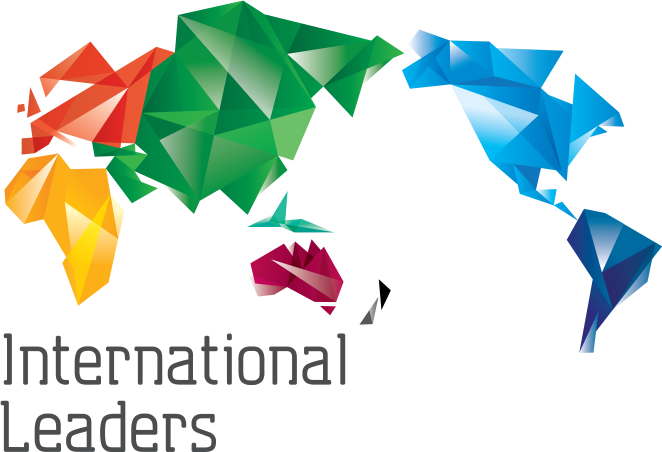London Leaders
Phone: +44 0203 4110930
Email: london@intlleaders.com
Website:www.london.intlleaders.com
London, United Kingdom,

Employee engagement is the only competitive advantage in the age of AI. Why?
A business is just the sum of its capital, its processes, and its people. The value of capital is changeable by the market itself, optimum processes will be rendered unpredictable as AI advances, leaving you only your people.
Your company’s success will depend on how engaged they are.
What is employee engagement?
Employee engagement is the intrinsic motivation of an individual or workforce.
Intrinsic motivation means doing something for the inherent satisfaction rather than for some kind of reward (extrinsic motivation). Intrinsic motivation is hard to measure reliably, but it drives us to keep pushing in the face of adversity, unlike “happiness” – a fickle concept and an unsensible metric.
Engagement strategies throughout history
Employers’ views of engagement have changed massively over the years.
During the 19th and 20th century, employers would judge an employee’s engagement based on how long they stayed with the company, how often they were late, and how smart their clothes were. Engagement ‘strategies’ worked to establish authority through discipline.
In the early noughties, Millennials entered the workforce and a rhetoric grew amongst employers that tenures were shortening – although this was largely untrue (Fry). Employers may have felt the sting of staff turnover more at this time since automation replaced many clerical jobs, meaning employees were generally more specialised.
As AI advances, employees will become ever more specialised, increasing their value and making turnover more damaging.
Following the 2008 Financial Crisis, the ‘Ping Pong Table’ phase of engagement began. Companies tried to win the talent war with game tables, free food and regular company socials.
The concept of employee engagement became gradually more well-known throughout the 2010s as companies found more imaginative ways to signpost their care for employees…whilst making very little real impact on engagement levels.
Then, COVID-19 hit and companies were forced to confront initiatives like working from home, and Google searches for ‘employee
wellbeing’ began to grow.
What does an engaged employee look like?
Engaged employees are more productive, more innovative, and more loyal to your company.
This manifests in better interpersonal relationships between colleagues, better collaboration, better problem-solving and much more.
Remember: engagement is viral.
Low and high engagement spreads throughout a team. New recruits adjust their expectations in line with the group, reinforcing the culture
with each new hire.
The world of work is changing
What is AI?
AI is the ultimate pattern-spotting machine.
Humans can actively weigh up a small number of factors before making a decision, whilst neural networks (the backbone of AI) can weigh up hundreds or thousands.
AI can then spot factors either imperceptible to humans or discounted due to bias. Neural networks have no preconceptions of the
importance of factors, but they can create perspectives through lengthy and intense training.
AI is not new, generative AI is
AI has been in use for years already – in facial recognition, translation, fraud detections…but the big shift has come with the rapid creation of generative AI models.
These models take prompts, from a few words to a complex brief, and create something new, such as text, images or video. Think Dalle, ChatGPT, Gemini…
AI began as complicated maths and can now produce creative writing, new ideas and complex strategies – faster, and oftentimes better – than the average human.
Is AI a threat to employees?
Society has always feared the changes new tech will bring upon work – we’ve seen this with electricity, motor cars, computers, mobile phones, cloud-based softwares…And yet right now, we have more people working and earning than ever before.
AI represents the biggest change yet – due to its unprecedented power and rate of technological advancement.
However, right now AI still needs a supervisor due to inaccuracies and hallucinations; we’re still a long way off from a 100% AI-run company being competitive.
AI can be seen as the calculator is to the mathematician; it assists with the basic work, allowing its users to tackle far more complex
problems. AI chatbots can field basic questions, freeing up human operators to tackle issues that require their training and skillset.
How will AI change the market?
AI will increase productivity massively – by removing clerical work and assisting with skilled tasks like creating social media posts, coding, and even business strategising.
With this help, more companies will be able to push innovation, focusing on other elements of their product base – faster and faster.
This will herald a new era of innovation, just as Vaucanson’s first all-metal lathe in 1751 spawned the creation of more machines which unlocked more advances in tech, leading to internal combustion engines, leading to easier transportation, leading to increased trade…
Crucially, AI will lead to far greater advancements. It will disrupt the world of work in all manner of unprecedented, unpredictable,
exciting – and terrifying – ways.
What will AI do to companies?
AI’s power to increase output quality and productivity raises the game for any company who wants to remain competitive.
Marketing, product design, customer experience, strategy and sales will all need to be better. Products from suppliers will become better, pushing company’s products to be better, pushing expectations from the market downstream, increasing competition.
Failure to keep up will increase the number of zombie companies, many of which will fall away over the next 10 years.
Companies will be forced to abandon what they know, with every employee on every level collaborating to embrace this new change, adapting
areas of the business to maintain a competitive advantage.
The importance of engagement
Why did engagement become so important Post-COVID?
COVID shook working practices into disarray. Flexible working and work from home came on the scene, and the balance of power shifted from belonging to the employer to being split more evenly between company and employee.
Traditional, autocratic businesses took the change badly. Forward-thinking companies seized the opportunity, luring dissatisfied employees away from their competitors.
Conversations around employee wellbeing, recognition and respect rose in volume as wandering talent could afford to raise their expectations, contributing to the Great Resignation.
Successful businesses listened to their employees, gathering regular high-quality feedback to strengthen weak areas within their culture.
Companies who chose not to compete for talent began to degrade in quality as their best people left for a better employer.
What’s next? Advanced tech, advanced problems
Companies are now facing the challenge of thriving in a new technological landscape; to do so, they must adapt at every level.
Most company cultures will struggle – either through intellectual stubbornness or lack of care for the problem. Culture will then become a company’s only long-term competitive advantage.
The old adage “people don’t leave jobs, they leave managers” should be adjusted, Wotter’s recent leavers research suggests, to be “people don’t leave jobs, they leave teams”. This is a crucial difference.
As company organisation structures continue to get flatter, employees are far more affected by the engagement of their team in more vertical
structures. As technology advances, there will be a continuing shift towards collaboration – meaning employees spend more time working with
their peers.
The solution: doubling down on culture to keep up
It is incredible what cultures can withstand and even grow from. Companies with an employee-first culture outperform their peers by a factor
of 4x (Kotter and Keskett 1992).
Engaged employees who care deeply about the company will be far more willing to embrace change and push themselves than those working within
a culture that fosters fear, blame culture and burnout.
When employees are willing to embrace change, their company will be more stable, with lower staff turnover and smoother talent acquisition –
due both to their preceding reputation and the support of existing teams during onboarding.
The impact of data and technology on engagement
Data’s overwhelming impact on strategy in sports
Data and technology have already revolutionised the world of sports strategy.
When Oakland Athletics first coined their “Moneyball” strategy, they were publicly ridiculed for their abandonment of baseball tradition, being told you couldn’t win a baseball game with data. Yet, Moneyball spread like wildfire, leading the Boston Red Sox to their first World Series title in almost a century.
People strategy within business is in a similar, but slower transitionary period. Trailblazers like Netflix and Google have famously focused
on employee culture throughout their growth, and many others are adopting this effective employee-first mindset.
How data can redefine employee engagement strategy
Only 22% of companies know what’s driving their employee disengagement (The Predictive Index).
This is costing the world economy $7.8 trillion annually (Gallup).
Most companies are striving for better engagement. The problem is their executives or HR people are using a “gut” read of the company to define their strategy. This leads to ineffective spending, where funds are diverted to fix issues that have no impact on hard business metrics like profitability, customer satisfaction or employee retention.
After a series of stabs in the dark, companies then falsely conclude there is nothing (more) they can do to improve employee engagement.
Data protects businesses against fatal false assumptions
Live metrics that quantify factors affecting employee experience allow organisations to focus their time and resources effectively – moving beyond a “finger in the air” approach.
Company cultures often mirror the leader or CEO by default. For example, whilst a gregarious CEO’s “fun” environment might suit some employees, if all social events are heavily alcohol-based, parents or older employees may feel alienated.
Clear data allows companies to analyse the way initiatives are received across the board, meaning businesses can target the root of issues
like diversity and retention.
The Millenial/Gen Z overhaul; tech on the rise
As younger generations enter the workforce, we see a higher percentage of employees eager to embrace new technologies.
With almost 60% of the UK workforce already being made up of the largely tech-savvy Millenials and Generation Z, the
adoption of new tech at work will be not only easier, but expected. This is twofold where tech can help employees feel more
satisfied with work.
Why engagement is the only competitive advantage
As we saw earlier, a business is just the sum of its capital, its processes, and its people.
The value of a company’s capital is changeable based on the value the market places on it. “Stable” businesses saw huge fluctuations in the wake of the pandemic, and the impact of AI is upon us.
Processes will be ripped up by the changing expectations of the market as companies try to keep up with customer and stakeholder requirements. This necessitates a new form of change management where nothing is sacred. Competitive advantages will come and go as each change compounds and companies rush to provide the solution the market needs.
Ultimately, the only thing of value left stable is a company’s people.
They are the finest assets a company can have when combined with a culture that embraces new processes. A culture of consistent learning and improvement gives the ability to compete in an ever-changing market.
Culture is a company’s only long-term competitive advantage.
London Leaders selects leading growth companies to become Members.
Phone: +44 0203 4110930
Email: london@intlleaders.com
Website:www.london.intlleaders.com
London, United Kingdom,

